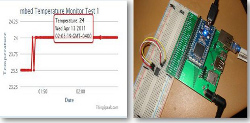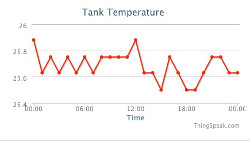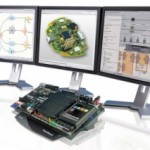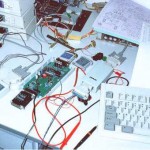Continuing from our previous articles which are focusing on a range of currently-available Internet-of-Things systems, we now move forward and explore another addition to the Internet-of-Things marketplace in more detail – the system known as “ThingSpeak”. Considered to be one of the first openly-available IoT platforms, ThingSpeak operates on their own free server platform, or you can run the software on your own personal servers – and as the entire system is open-source, it’s easier to work with and customise.
As with the other systems examined, ThingSpeak gives your devices the opportunity to interact with a server for simple tasks such as data collection and analysis, to integration with your own custom APIs for specific purposes. Due to the open-source nature the start-up cost can be almost zero, and unlike other systems ThingSpeak is hardware agnostic – giving your design team many hardware options. However as always, let’s consider the main two components in more detail.
Hardware – You don’t need to purchase special base units or proprietary devices. As long as your hardware is connected to the Internet and can send and receive HTTP requests – you’re ready to go. For rapid prototyping, examples are given using many platforms including netduino, Arduino, mbed, and even with the competitive Twine hardware. This gives you a variety of MCU platforms from Atmel and ARM Cortex providers to work with, and as these development platforms are either open-source or inexpensive, your team can be up and running in a short period of time.
Furthermore creating your own devices can be quite inexpensive – a simple device based on an Atmel AVR and Ethernet interface can be manufactured for less than $20 in volume, and doesn’t require any software licensing expenses. To save on hardware costs, it could be preferable to have various sensors in a group communicate back to one connected device via inexpensive Nordic NRF24L01 wireless transceivers – and the connected device can thus gather the data into the require fields for transmission back to ThingSpeak.
Software – Thanks to the open-source nature of ThingSpeak either working with the existing server software or creating your own APIs isn’t a challenge. Interaction is easy with simple HTTP requests to send and receive data, which has a useful form. Each data transmission is stored in a ThingSpeak “channel”. Each of these channels allows storage and transmission of eight fields with 255 alphanumeric characters each, plus four fields for location (description, latitude, longitude and elevation – ideal for GPS), a “status update” field and time/date stamp. Data sent over the channels can be public or private – with access via your own devices and software finalising the security.
Once sent to the server this data can be downloaded for further analysis, or monitoring using various HTTP-enabled entities – from a simple web page, mobile application or other connected device. Various triggers can be created to generate alerts for various parameters, and can be sent using email, twitter, or other connected services such as an SMS gateway. After being in operation for almost three years, the platform has matured to a reliable service that has exposed many developers to its way of doing things, so support and documentation is becoming easier to find.
Overall the ThingSpeak system offers your organisation a low barrier to the Internet of Things. Creating a proof-of-concept device or prototype hardware interface can be done with existing or inexpensive parts, and the use of ThingSpeak’s free server can make an idea become reality in a short period of time. And once you device on the service, by internalising the server software, you can have complete control and security over your data.
If you’re interested in moving forward with your own system based on the ThingSpeak, we have a wealth of experience with the required hardware options, and the team to guide you through the entire process – from understanding your needs to creating the required hardware interfaces and supplying firmware and support for your particular needs.
Our goal is to find and implement the best system for our customers, and this is where the LX Group can partner with you for your success. We can create or tailor just about anything from a wireless temperature sensor to a complete Internet-enabled system for you – within your required time-frame and your budget. For more information or a confidential discussion about your ideas and how we can help bring them to life – click here to contact us, or telephone 1800 810 124.
LX is an award-winning electronics design company based in Sydney, Australia. LX services include full turnkey design, electronics, hardware, software and firmware design. LX specialises in embedded systems and wireless technologies design. https://lx-group.com.au
Published by LX Pty Ltd for itself and the LX Group of companies, including LX Design House, LX Solutions and LX Consulting, LX Innovations.







